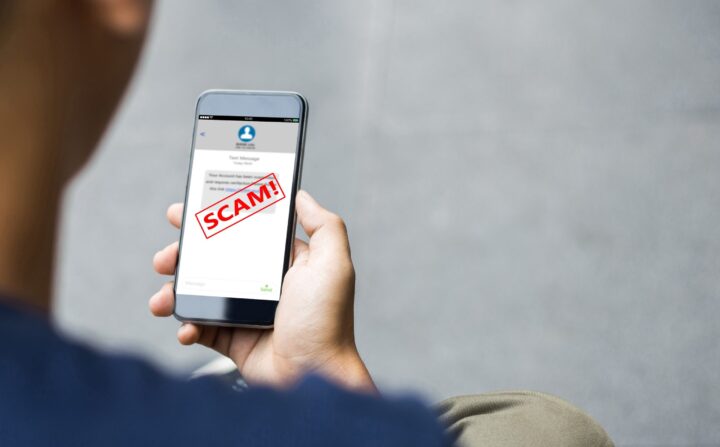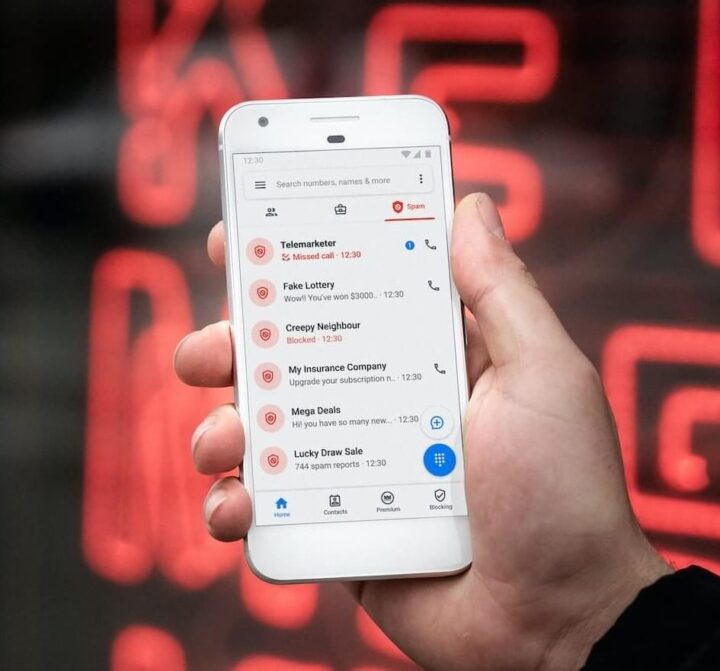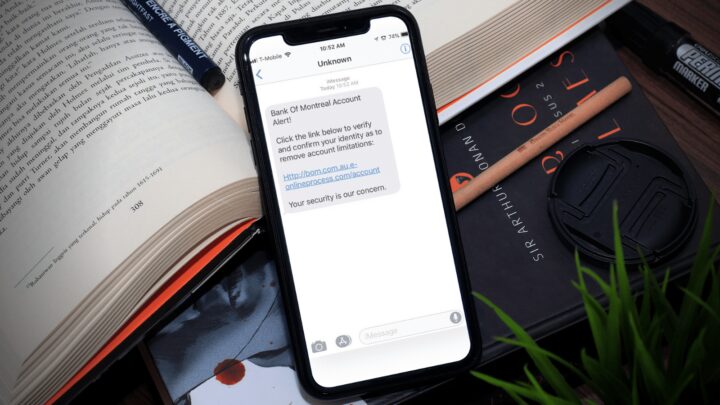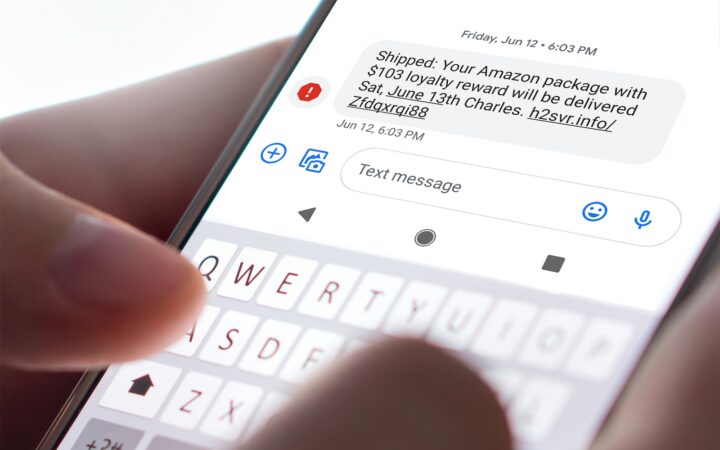With increasing digital adoption, data threats have surged at an epic scale in the recent few years. This has given rise to various terminologies unfamiliar to many of us.
One such term is smishing. It is a new kind of risk to 97% of the American population who use a mobile phone. But what exactly does it involve, how can it threaten your safety, and what steps can you take to remain safe? In this article, you will find all the answers.
The Real Dangers of Smishing
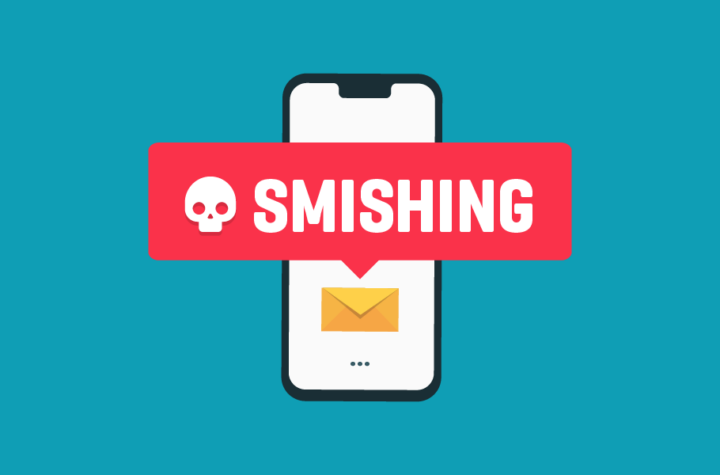
Before we explain smishing, let’s first look at a more common term—phishing. This refers to any type of attempt aimed at tricking you into divulging personally identifiable information (PII).
For instance, a criminal impersonating your bank can contact you under the guise of verifying your account information. Suspecting nothing, you could end up providing your bank account number, account password and username, and various other details that will allow scammers to commit identity theft and financial fraud.
A racketeer could use phone calls, SMSs, emails, social media messages, and various other mediums to execute such an attack. Smishing refers to phishing threats implemented via SMS.
These are sometimes mass-generated, where a standard SMS with a malicious link is circulated among thousands and, at times, millions of people. Some smishing scams are meticulously designed to target a specific individual after researching and identifying them using publicly available data.
Here are a few examples of smishing attacks you can experience:
-
Fake marketing
Deceptive marketing SMSs can ask you to click a link and enter your information to win an attractive gift or a discount coupon.
-
IRS impersonations
Source: payrollpartners.com
This usually involves a notification demanding the immediate payment of an overdue tax using a link provided.
-
Bank imposters
A fake message imitating your bank can inform you about a platform upgrade and ask you to click a link to update your login credentials.
-
Retail scams
A criminal could impersonate a popular retailer and inform you that your account is compromised. To change the password and secure your account, you will be asked to log in using a link shared in the message.
-
Malware downloads
Some message links can download malicious software that phishes for information on your phone.
-
Fake lotteries
Source: itjones.com
You may receive an SMS congratulating you for winning a large amount of money from a lottery. To claim your prize, you must click a link and enter your SSN, tax details, and bank account information.
-
Business phishing
For example, a message that seems to be from your boss can ask you to share confidential business information.
Sometimes, these messages may come from numbers you recognize, making you believe you are receiving them from trusted individuals. This can happen when a criminal steals the phone number of someone you know.
However, the majority of the time, scammers will SMS using unfamiliar phone numbers, possibly local ones created with spoofing technology. Either way, identifying them could be tricky if you are not vigilant.
Warning Signs of SMS Phishing
An important red flag of smishing is a message that urges you to click a link. This is a convenient and effective strategy to redirect victims to fake or spoofed sites set up by criminals to steal personal data.
Some messages may simply ask you to respond with the requested information via SMS. However, what all of them will have in common is a sense of urgency, placing extra pressure on you to take immediate action. Some may also contain unusual typos or errors in language use.
How Can You Protect Yourself Against Smishing?
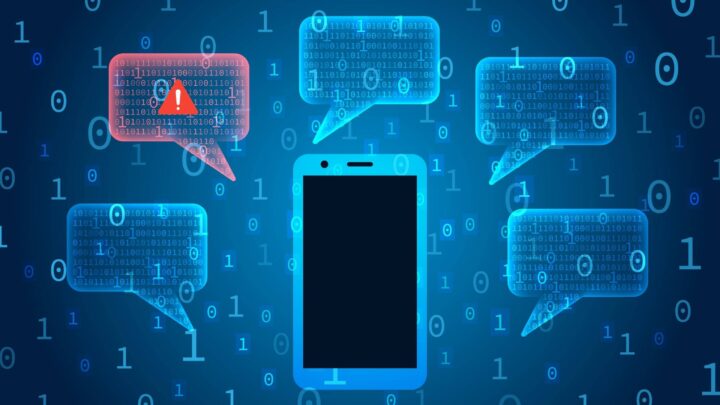
Here are the essential measures you can take to avoid SMS phishing attacks.
-
Always be suspicious
When you adopt a cautious approach towards SMS communications, you have a better chance of avoiding deceptive advances. So, think twice before responding to a message that requests personal or confidential data, even when you receive them from those known to you.
-
Never respond in a hurry
Taking time to evaluate the details at hand is critical in determining the best course of action. Therefore, don’t allow anyone to rush you into responding to their requests, no matter how urgent the situation may seem.
-
Verify the source
Source: wedgwoodinsurance.com
If you receive a message from an unsaved number, use PhoneHistory to uncover more details about its registered owner. When the SMS claims to be from a legitimate organization, find their official number online and call to verify the message source.
-
Ignore unverified links
Never use links shared in messages to access websites. For example, if a message from the IRS asks you to log in to your account, directly type its regular URL to visit the login page.
-
Avoid marketing spam
Some marketing messages can be pretty tempting, especially when they involve an attractive deal or free giveaway. These types of promotional messages can even have a viral effect when people circulate them among friends and family without suspecting a scam.
If you receive such a message, don’t allow curiosity to get the best of you.
-
Never circulate unsolicited SMSs
By forwarding unverified messages to your loved ones, you could unwittingly help scammers target more victims for their smishing attacks.
-
Report suspicious messages
Source: thesslstore.com
Inform the Federal Trade Commission about any dubious SMSs. If you suspect a legitimate organization is being mimicked, ensure you alert them, too.
-
Take preventative action
By taking preventative steps, you can minimize SMS phishing threats to a great extent. For instance, register your phone number with the FTC’s Do Not Call Registry to prevent telemarketers from reaching you. Install virus protection on your phone to detect malware downloads from malicious links.
Moreover, only give out your phone number to organizations if there is a legitimate reason, but remember to read their data protection and sharing policies first. Another important step you can take is downloading a caller ID app. These can scan incoming messages and warn you of scam- or spam-related ones.
Key Takeaways
Smishing attacks are on the rise and can compromise your data security with a single heedless move. So, identifying their warning signs and protecting yourself against them is critical for your safety.
Adopt a cautious approach to unexpected or unsolicited SMSs. Take your time to evaluate the information, verify its source before you respond, and ignore links and marketing spam. In addition, avoid circulating unverified messages, take preventative action, and report suspicious SMSs to the relevant authorities.


